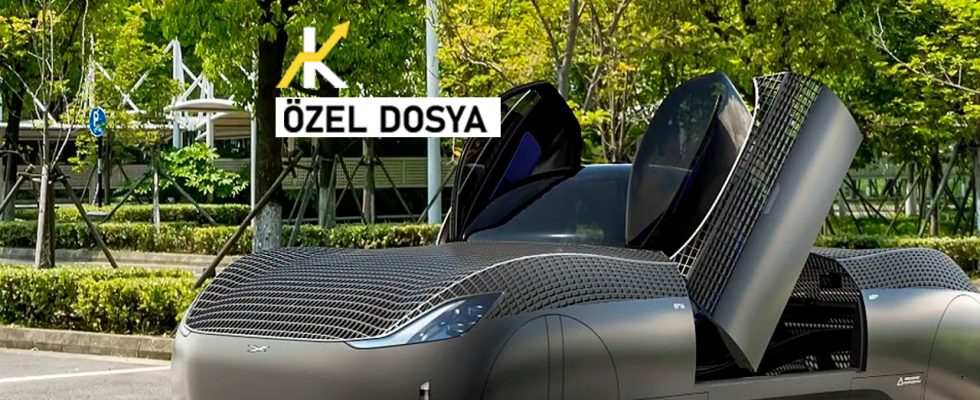When it comes to flying cars, it’s normal for everyone to think of the Jetsons cartoon or Back to the Future 2 movie. Studies on flying cars, which were once only featured in movies and cartoons, have been carried out for many years, but these vehicles, which could not achieve commercial success, could not be mass-produced. But in the light of the latest developments, flying cars seem to be entering our lives now.
The US Aviation Administration (FAA) has granted flight certification for the Model A flying car of Alef Aeronautics, a US venture. Alef Aeronautics says the Model A is the first flying car that can be driven on public roads and parked like a regular car. With vertical take-off and landing capability, the Model A will be able to carry one or two passengers, as well as have a 320-kilometer road and a 180-kilometer flight range. The car, which is expected to be released in 2025, will be sold for $ 300,000.
Vehicles that can take off and land vertically are called VTOL. Numerous companies are working on all-electric VTOLs. The FAA has announced that the Alef is not the first flying vehicle of its kind to receive an airworthiness certificate. However, Alef Aeronautics noted that his vehicle is different from the others in that it can run both on the road and in the air, looks like a normal car and can park in a normal parking lot. On the other hand, the flying car will not be able to speed more than 40 kilometers per hour on asphalt, as it is certified as a low speed vehicle. In the statement made by Alef, it is emphasized that those who want to drive the vehicle quickly should take advantage of the flight feature.
USES THE FRONT AND REAR SECTIONS OF THE VEHICLE AS WINGS!
The surface of Model A, where the driver will sit in the middle of the vehicle in a balloon-like cockpit, is designed to allow a mesh-like air passage. Instead of one large engine, the Model A uses four small engines powering eight propellers, four on each side of the central capsule. The vehicle that lifts vertically will turn sideways when it takes off. In other words, when the car is in the position, the front and rear parts will be the right and left parts of the vehicle so that it can function as wings when it is in the flying position. Accordingly, the cockpit, which can rotate 90 degrees while taking off, will also change place.

Founded in 2015 in Palo Alto, California by Jim Dukhovny, Konstantin Kisly, Pavel Markin, Oleg Petrov, the company has been test-driving and flying the prototype of the car since 2019. The company’s CEO, Jim Dukhovny, says they were inspired by the movie Back to the Future 2 for the flying vehicle concept.
A CENTURY OF FLYING CAR STUDIES
Although we always see it in movies and cartoons, studies on flying cars have actually been done for a long time. The idea of creating a flying car goes back to the invention of the airplane (1903), to the first invention of the automobile. The first flying car trials began in the early 1900s. The 3-wing Autoplane was designed by inventor Glenn Curtis in 1917. This car could jump but could not take off.
One of the first fixed-wing cars that could take off was the Arrowbile, produced by Waldo Walterman in 1937. However, the vehicle could not go into mass production due to financial insufficiency. In the 20th century, many fixed-wing vehicles that could go and fly on the road, called ConvAirCar, Aerocar and Avrocar, were produced, but none of them achieved commercial success.

Of course, the Model A isn’t the only flying car being studied today. The 3-wheel Liberty Sport vehicle of the Dutch company PAL-V International is being tested to be certified by the European Aviation Safety Agency. Another prototype is the AirCar from Klein Vision. The wings and tail of the AirCar, which has 4 wheels and can go on land, can be opened with the push of a button. Thus, the AirCar, which can also transform into an airplane, can reach a speed of 300 kilometers per hour while flying.
Sources: CNN, USA Today, Howstuffworks, Robb Report
Risk Disclosure: The articles and articles on Kriptokoin.com do not constitute investment advice. Bitcoin and cryptocurrencies are high-risk assets, and you should do your due diligence and do your own research before investing in these currencies. You can lose some or all of your money by investing in Bitcoin and cryptocurrencies. Remember that your transfers and transactions are at your own risk and any losses that may occur are your responsibility. Cryptokoin.com does not recommend buying or selling any cryptocurrencies or digital assets, nor is Kriptokoin.com an investment advisor. For this reason, Kriptokoin.com and the authors of the articles on the site cannot be held responsible for your investment decisions. Readers should do their own research before taking any action regarding the company, assets or services in this article.
Disclaimer: Advertisements on Kriptokoin.com are carried out through third-party advertising channels. In addition, Kriptokoin.com also includes sponsored articles and press releases on its site. For this reason, advertising links directed from Kriptokoin.com are on the site completely independent of Kriptokoin.com’s approval, and visits and pop-ups directed by advertising links are the responsibility of the user. The advertisements on Kriptokoin.com and the pages directed by the links in the sponsored articles do not bind Kriptokoin.com in any way.
Warning: Citing the news content of Kriptokoin.com and quoting by giving a link is subject to the permission of Kriptokoin.com. No content on the site can be copied, reproduced or published on any platform without permission. Legal action will be taken against those who use the code, design, text, graphics and all other content of Kriptokoin.com in violation of intellectual property law and relevant legislation.
